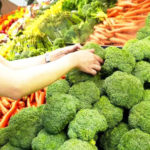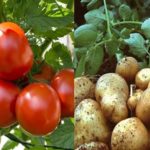Home-grown vegetables are gaining popularity, especially in urban areas where garden space is often limited. One effective method to ensure a steady supply of fresh produce for your family’s meals is to utilize polystyrene boxes. This solution is not only space-saving but also highly convenient. With some basic care tips and the right vegetable choices, you can easily create a vibrant and safe mini-garden right in your kitchen.
To ensure a constant supply of fresh vegetables for your daily meals without having to visit the market, consider the following suitable options for polystyrene box gardening:
**Watercress**
Watercress is an ideal choice for beginners in home vegetable gardening. This vegetable is not only easy to care for but also packed with nutrients. It thrives in a polystyrene box environment as long as the soil remains moist and is watered regularly. You can harvest watercress after about 30-35 days. However, be careful not to overwater to prevent waterlogging.
**Water Spinach**
Water spinach, a familiar sight in Vietnamese meals, can be easily grown in polystyrene boxes. This vegetable doesn’t require much space and can flourish with minimal care. Thus, it is a perfect addition to your daily menu without the monotony of the same old vegetables.
You can start growing water spinach by sowing seeds or cutting stems. After about 25-30 days, you’ll be able to harvest it. Remember to harvest carefully so the plant can continue to produce new shoots.
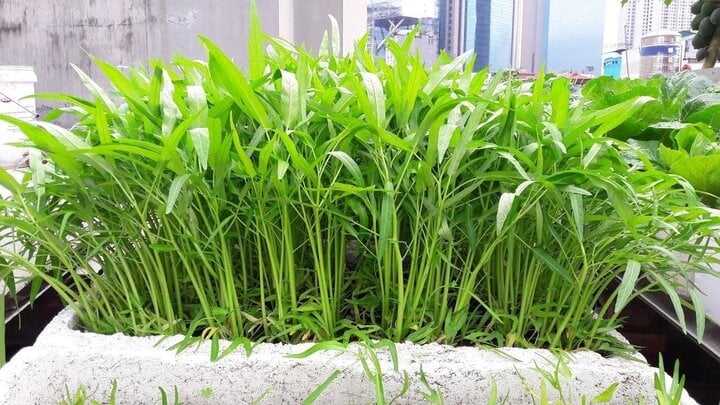
Starting Water Spinach by Sowing Seeds or Cutting Stems
**Sprouts**
Sprouts are an ideal choice for polystyrene box gardening, and they are easy to grow and can be harvested in just 7-10 days. These vegetables are highly nutritious, providing your body with fiber, vitamins, and minerals.
When growing sprouts, place the polystyrene box in an area with indirect sunlight to avoid direct harsh rays, which can be detrimental to their growth. Lightly water them daily to maintain moisture, but avoid overwatering, as it may damage the delicate sprouts.
**Spoon Mustard**
Spoon mustard is a leafy green vegetable characterized by thick, crisp leaves that offer a refreshing sweet taste. It is perfect for boiling or stir-frying. Another advantage is that spoon mustard can be grown easily in polystyrene boxes without requiring too much space.
Spoon mustard seeds germinate quickly, usually within 2-3 days of sowing. You’ll be able to harvest the vegetable in a short time, approximately 30 days from planting. When harvesting, cut the stems near the base to encourage the plant to continue growing and producing new leaves.
**Choy Sum**
Choy sum is a popular vegetable due to its ease of cultivation and adaptability. This vegetable can tolerate high temperatures and thrives when grown in full sunlight. The typical harvest time for choy sum is around 25-30 days after planting.
**Ngót Herb**
Ngót herb is an excellent choice for those living in hot climates as it grows well with minimal care. Polystyrene boxes provide an ideal environment for growing ngót herb at home, especially for busy individuals. You can harvest this herb after about 30-40 days. When cutting, remember to leave about 10cm from the base to allow the plant to branch out anew.
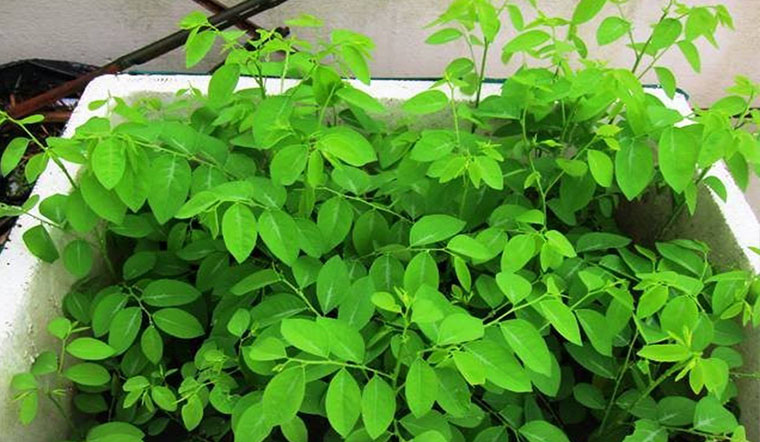
Polystyrene Boxes: Ideal for Growing Ngót Herb at Home
**Amaranth**
Amaranth is easy to grow and thrives in hot conditions. It is resistant to pests and offers numerous health benefits, such as cooling the liver and improving digestion. There are several varieties of amaranth, including grain amaranth, red amaranth, and green amaranth, all of which are simple to cultivate and care for.
**Malabar Spinach**
Malabar spinach is a common ingredient in soups, known for its mild flavor and detoxifying properties, which help relieve constipation and improve skin health. This vegetable is resilient and resistant to pests, and it can be grown year-round. It doesn’t require much light, making it suitable for families with limited space and lighting. After a month of planting, you can start harvesting Malabar spinach.
**Indian Spinach**
Indian spinach is a fast-growing, easy-to-cultivate vegetable that thrives in tropical climates. It is perfect for cooling summer soups. With a harvest time of around 25-30 days, Indian spinach offers convenience to gardeners.
**Chrysanthemum Greens**
Chrysanthemum greens stand out for their high nutritional value, particularly their rich content of vitamins A, B, and C. In traditional medicine, this vegetable is believed to aid digestion and alleviate cold symptoms. Chrysanthemum greens are commonly used in soups or hot pots. The ideal harvest time is between 25 and 30 days; leaving them for over 40 days will result in older, less tasty, and less nutritious leaves.
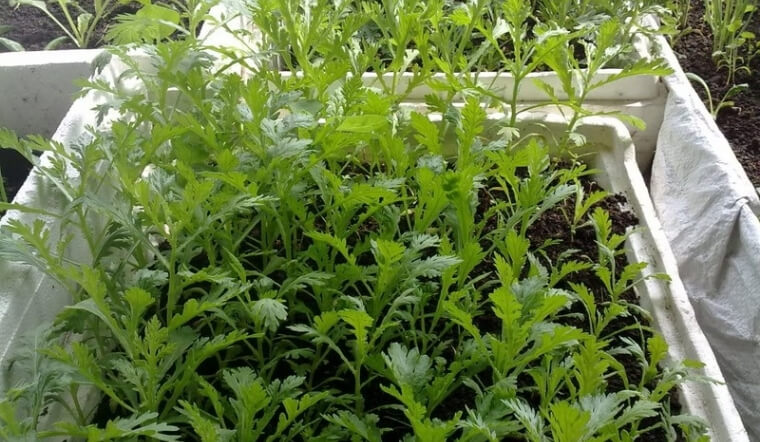
Chrysanthemum Greens: Packed with Vitamins A, B, and C
**Lettuce**
Lettuce is easy to grow, requires minimal care, and has a quick harvest time. It is a herbaceous plant commonly used in raw meals. You can harvest lettuce after 35-40 days, when the plant has reached its maximum growth.
**Coriander**
In the culinary world, coriander is considered an indispensable herb in many traditional dishes. With its strong aroma and distinctive flavor, coriander enhances the appeal of meals and contributes to a diverse dining experience. Apart from its role as a seasoning, coriander also adds a touch of color to food presentations or can be enjoyed raw.
Due to its robust growth, coriander is easy to cultivate and care for. Simply sow the seeds and ensure regular watering, and you’ll have lush coriander plants in no time.
**Scallions**
Scallions are another excellent choice for those who love growing herbs at home. Given their popularity, scallions can be conveniently grown in polystyrene boxes, offering a readily available supply. Starting with just a few dry bulbs, you can quickly plant and grow scallions. After about 7-10 days, you’ll see them sprouting, and within 2-3 weeks, they’ll be ready for harvest. The harvest period for scallions is quite long, ensuring an abundant supply for daily meals.
7 Simple Ways to Choose the Freshest Produce
“Choosing fresh produce can be a challenge, especially for those new to the game. With a few simple tips and tricks, you can become a master at selecting the best vegetables and fruits. We’ve compiled a list of 7 ways to choose fresh produce, so you can make informed choices and take your grocery game to the next level. It’s time to equip yourself with the knowledge to differentiate between the vibrant and the vile.”


























